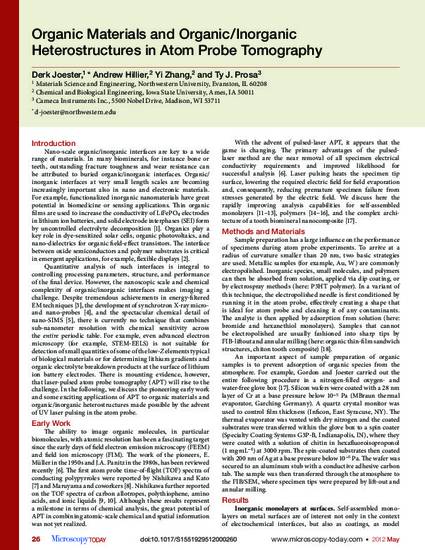
Nano-scale organic/inorganic interfaces are key to a wide range of materials. In many biominerals, for instance bone or teeth, outstanding fracture toughness and wear resistance can be attributed to buried organic/inorganic interfaces. Organic/inorganic interfaces at very small length scales are becoming increasingly important also in nano and electronic materials. For example, functionalized inorganic nanomaterials have great potential in biomedicine or sensing applications. Thin organic films are used to increase the conductivity of LiFePO4 electrodes in lithium ion batteries, and solid electrode interphases (SEI) form by uncontrolled electrolyte decomposition. Organics play a key role in dye-sensitized solar cells, organic photovoltaics, and nano-dielectrics for organic field-effect transistors. The interface between oxide semiconductors and polymer substrates is critical in emergent applications, for example, flexible displays.
Available at: http://works.bepress.com/andrew_hillier/36/

This article is from Microscopy Today20 (2012): 26-31, doi:10.1017/S1551929512000260. Reprinted with permission.